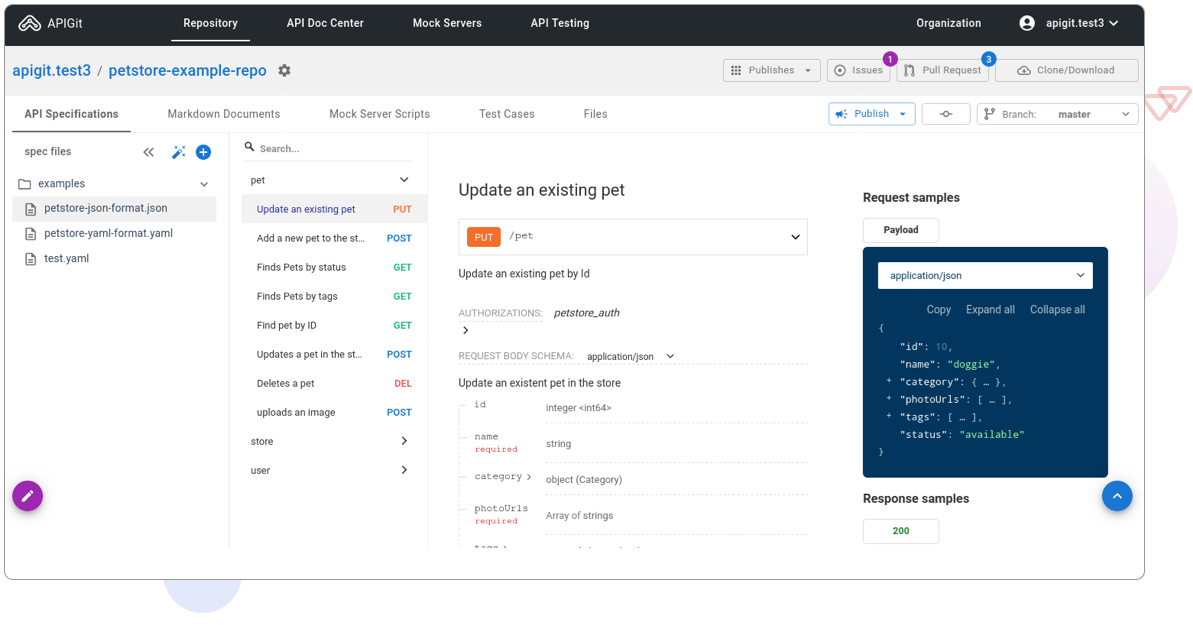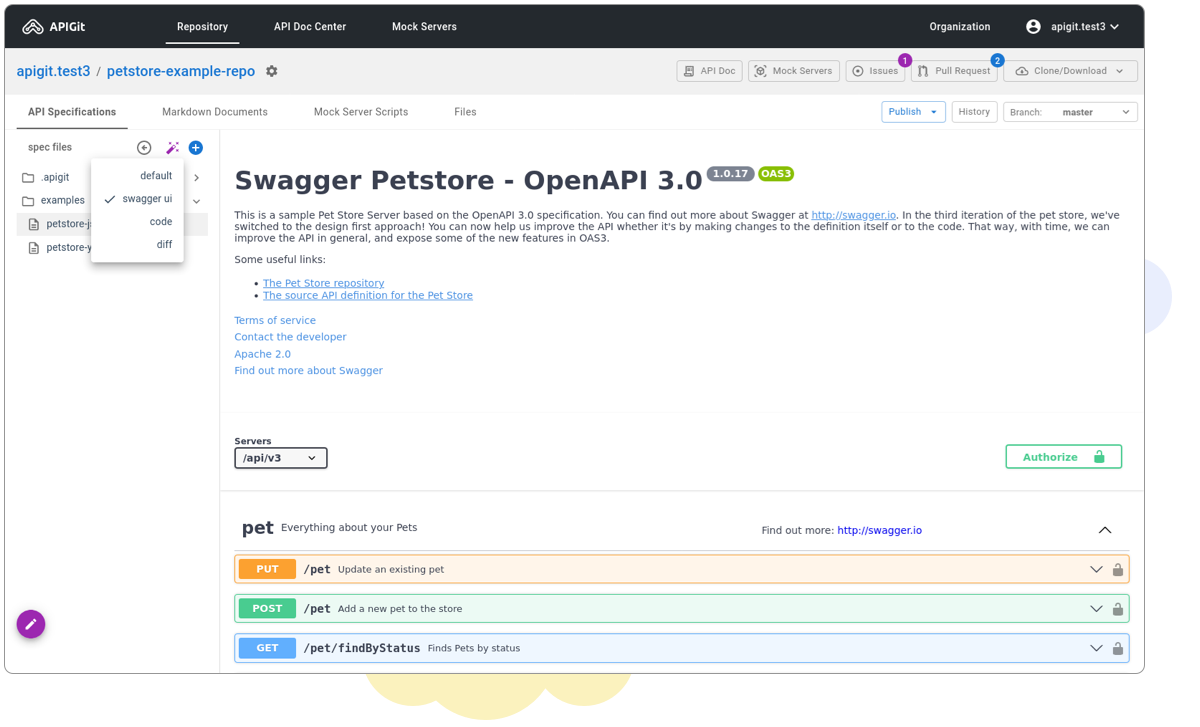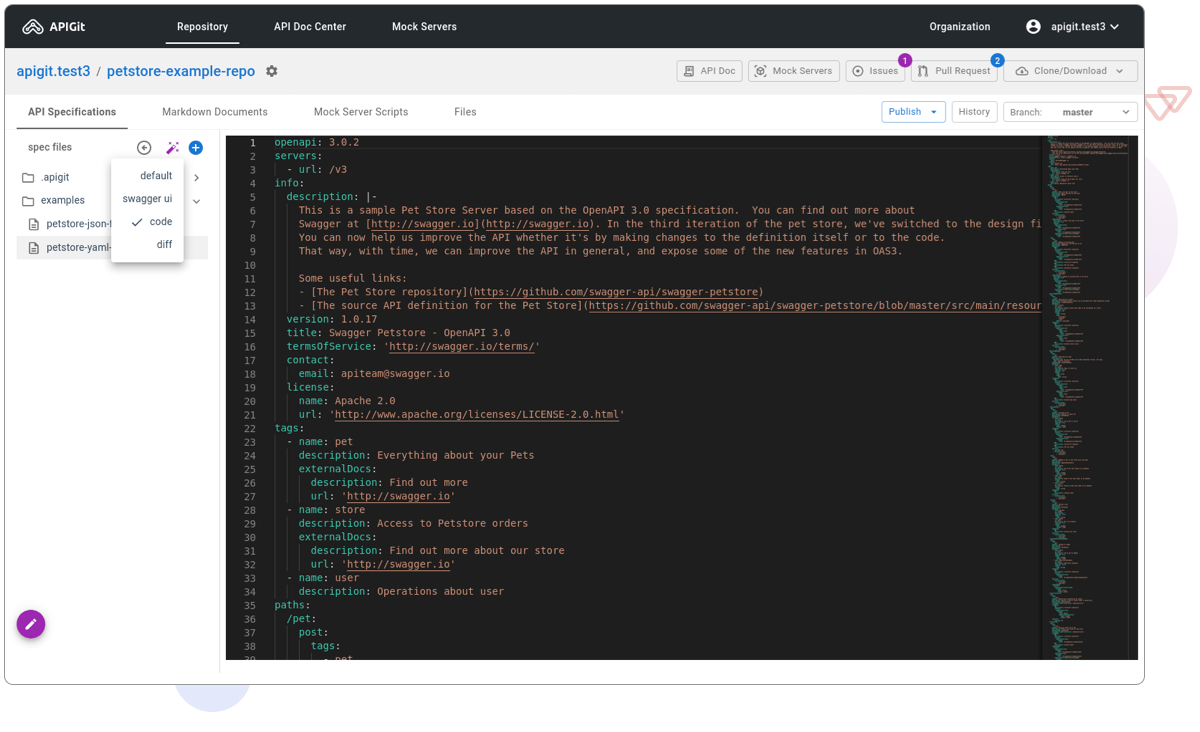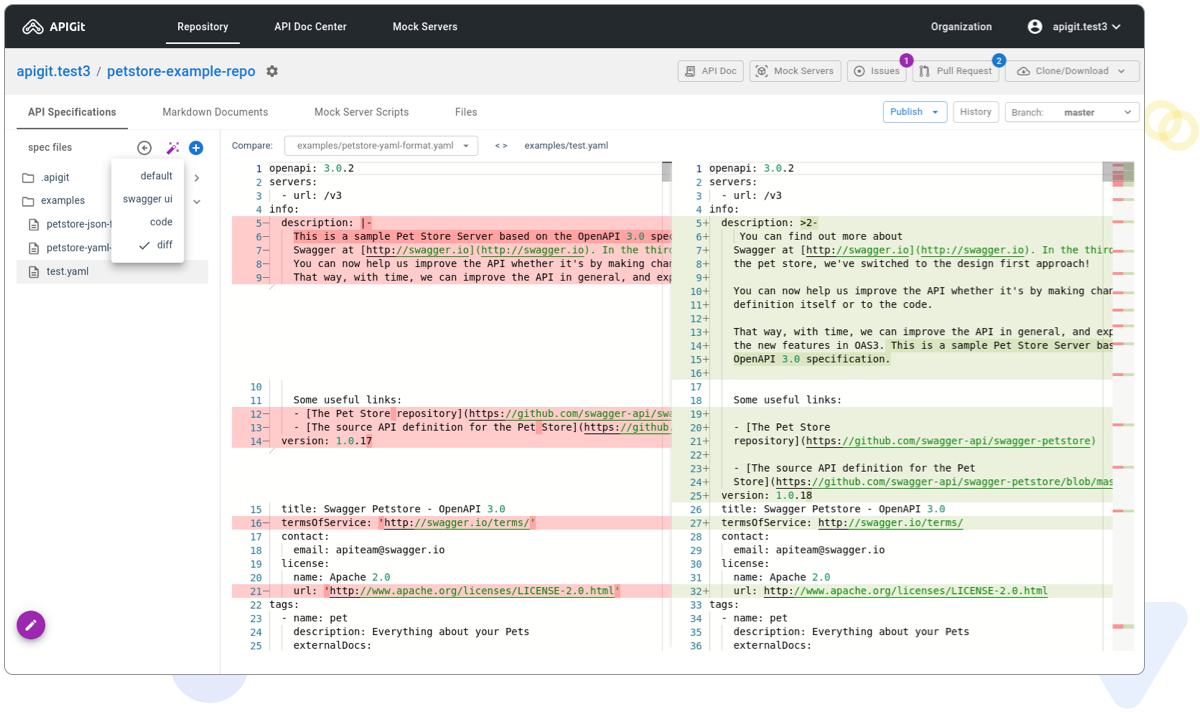APIGit offers a flexible and user-friendly experience for viewing API documents. You can easily switch between different viewers to view the same document from different perspectives, allowing you to gain a deeper understanding of the API and its capabilities. The default viewer is built using the popular open-source Redoc viewer, which provides an attractive and straightforward layout that makes it easy to navigate and understand the API documentation.

The Swagger viewer is a classic and easy-to-use option for visualizing API documents. It offers a simple, uncluttered layout that allows for clear and efficient navigation. Additionally, this viewer is optimized for performance, making it an ideal choice for large or complex API documents. It provides a traditional way to understand and navigate the API documentation which is simple and easy to understand.

The Code viewer offers a raw and unformatted view of an API document, providing users with a detailed look at the underlying structure and format of the document. This viewer is particularly useful for debugging errors, as it allows users to see the exact code and formatting used in the API. Additionally, for experts in API development, the Code viewer can be an efficient way to edit API documents, providing easy access to the underlying code. This viewer is the best choice for developers and experts who want to understand the API documentation in a more technical way and make changes to it.

The Diff viewer allows users to compare two different API documents within a repository. This feature is particularly useful for third-party integrations, as it allows for easy review and understanding of any changes made to auto-generated API documents. It helps to compare the changes made in the API document and understand the updates in a better way. It is a great tool for reviewing updates, merging changes and ensuring consistency in the API documents.

Related Posts
what are the components of an api
This article explains the different components of a REST API by following a request from end to end. An API client is responsible for assembling and directing an API request to the API server. An API request to a REST API consists of an endpoint, method, parameters, request headers, and a request body. The API server handles authentication, validates input data, retrieves or manipulates data from a database, and returns the appropriate response to the client. An API response typically includes a status code, response headers, and a body. API status codes are used to provide information to the client about the outcome of the request and to help the client understand how to proceed. Response headers and bodies provide additional information and data about the response.
Secure Your Digital Doorways: Comprehensive API Security Best Practices
Protect your APIs with strong authentication, authorization, data encryption, rate limiting, input validation, and regular security testing to prevent unauthorized access and data breaches.
navigation customization for published documents
Navigation customization for published API documents allows organizations to create intuitive, branded experiences that enhance user engagement and streamline access to critical information.
Ready to get started with APIGIT?
Join thousands of developers and teams who are already using APIGIT to streamline their API development workflow.